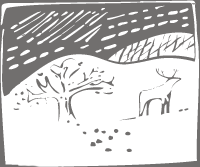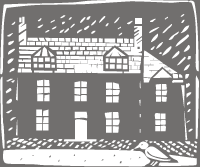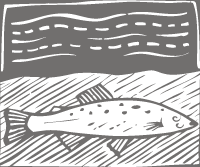Cray House and Estate is located in Glenshee in eastern Perthshire, through which flows the Shee Water. At the northern head of the Glen we find The Spittal of Glenshee where Glens Beag and Lochsie meet. It then runs south-east to Bridge of Cally where it merges with Strathardle to form Glen Ericht.
Once known as the Glen of the Fairies, it takes its name from the Gaelic “sith” meaning fairy and the old meeting place at the standing stone behind the present day church is called Dun Shith or Hill of the Fairies.
Settlements
The Glen’s main settlement, Spittal of Glenshee, was founded by monks from Coupar Angus Abbey to provide shelter and hospitality for travellers, hence the name “Spittal”. The first record of a refuge for travellers dates back to 961 AD. Unfortunately over the centuries it has had an unenviable record of being destroyed by fire and in 1959 it was destroyed to be rebuilt in a Scandinavian style, only to be completely destroyed again in 2014. Currently it is a burnt out shell awaiting its next incarnation. There are however self-catering lodges, an outdoor activity centre, the church and an original General Wade humpback bridge.
Other settlements in the Glen are at Finegand, Dalnaglar, Lair (where there is a pottery shop and tourist information point), Cray itself, Mountblair, Blacklunans, Glenkilrie, Dalrulzion, Blackwater and Persie.
The Shee Water is formed at the Spittal, where the Allt Lochay and Allt Beag join. The Shee changes its name at Blacklunans to the Blackwater. At Bridge of Cally it joins the River Ardle to form the River Ericht, and ultimately on into the River Tay.
General Wade’s military road
The A93 road, part of General Wade’s military road from Perth to Fort George, runs north through the Glen and on into Glen Beag, where it crosses the Cairnwell Pass at 2200 feet above sea level making it the highest public road in the UK. The road climbing to the summit is now wide and straight but until the late 1960s it included two notorious hair-pin bends with a 1 in 3 (33%) gradient known as the Devil’s Elbow. One of the most spectacular roads in Scotland, this was a favourite subject for postcards. As a result of the ascent, buses used unload their passengers at the bottom who then had to walk to the top. Until it was rebuilt, the AA maintained a well in a lay-by for overheating engines. Locally the pass is still known simply as “The Elbow”.
Clans
Between Finegand and the Lair is the historic Cockstane (Clach Na Coileach), the ancient meeting place of the Clan MacThomas. There is a car park and information board with all the history. Current members of the Clan MacThomas from across the world gather here regularly.
Skiing in Glenshee
The Glenshee Ski Centre sits at the head of the Cairnwell Pass and is Scotland’s biggest, with 21 lifts spread over 4 mountains and three valleys. There are hire shops and cafes etc. Skiing started informally there in the 1930s with the first tow being set up by the Dundee Ski Club in 1947. In the 1960s with road improvements easing access, the Glenshee Chairlift Company was set up. Modern facilities were built and business boomed throughout the 1970s and 80s. However, a succession of mild winters and poor skiing conditions led to the Ski Company going into receivership, but a management buy-out ensured skiing survived and once again business is good.
Castles and Golf
Located centrally in the Glen is Dalnaglar Castle. The site dates back to the 16th century and the current castle was built by the architect responsible for Balmoral Castle in the 19th century.
Branching off at the Spittal is the private road up Glen Lochsie leading to Dalmunzie Hotel whose scenic 9-hole golf course opened in 1922, having been laid out by leading course designers Dr McKenzie and James Braid.
Fire!
In the 1960s a basic Fire Station consisting of an ex-army Nissen Hut was built by Perth & Kinross Fire Service within Finegand Farm steading, with the appliance manned by local volunteers. In the 1990s this was replaced by a state of the art Fire Station alongside the A93 just south of Finegand. This is still manned by volunteers, now trained by the Scottish Fire and Rescue Service.
Finegand
Finegand is located in Glen Shee and encompasses the lands east of the Shee Water adjacent to a burn which joins it about 4 miles below the Spittal and about 18 miles north of Blairgowrie. The name is a corruption of the Gaelic Fèith nan Ceann, meaning “the burn of the heads” and takes its name from an event, which according to legend, took place sometime in the 15th century. Local history tells of 15th century tax collectors sent repeatedly to Glenshee, to collect ever-increasing tax from the highlanders “in whatever manner they deemed most effective”, usually at the point of a sword. On one occasion, the glensmen having become so enraged at the tax collectors’ pillaging, not only killed them all, but cut off their heads and threw them into the burn.
Finegand and the surrounding lands were long associated with the Clan MacThomas although few clansmen remain in the glen, having fled or been forcibly disbursed after supporting the Jacobite cause.



